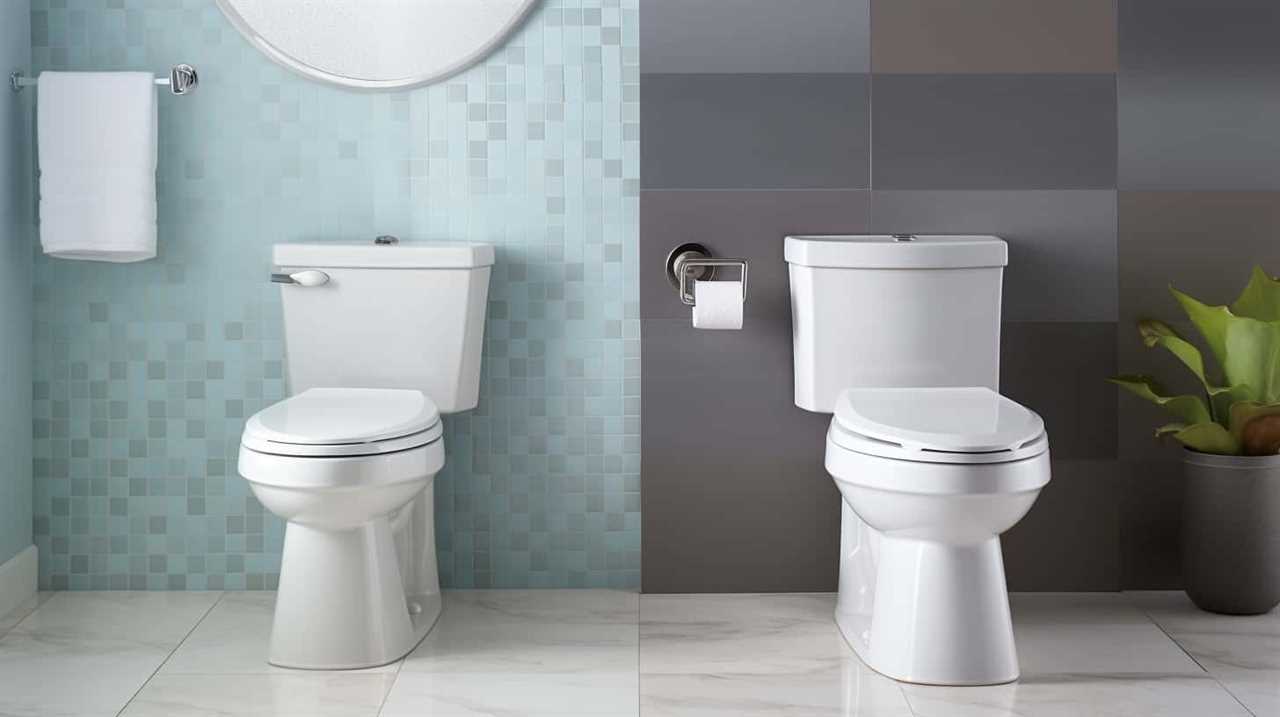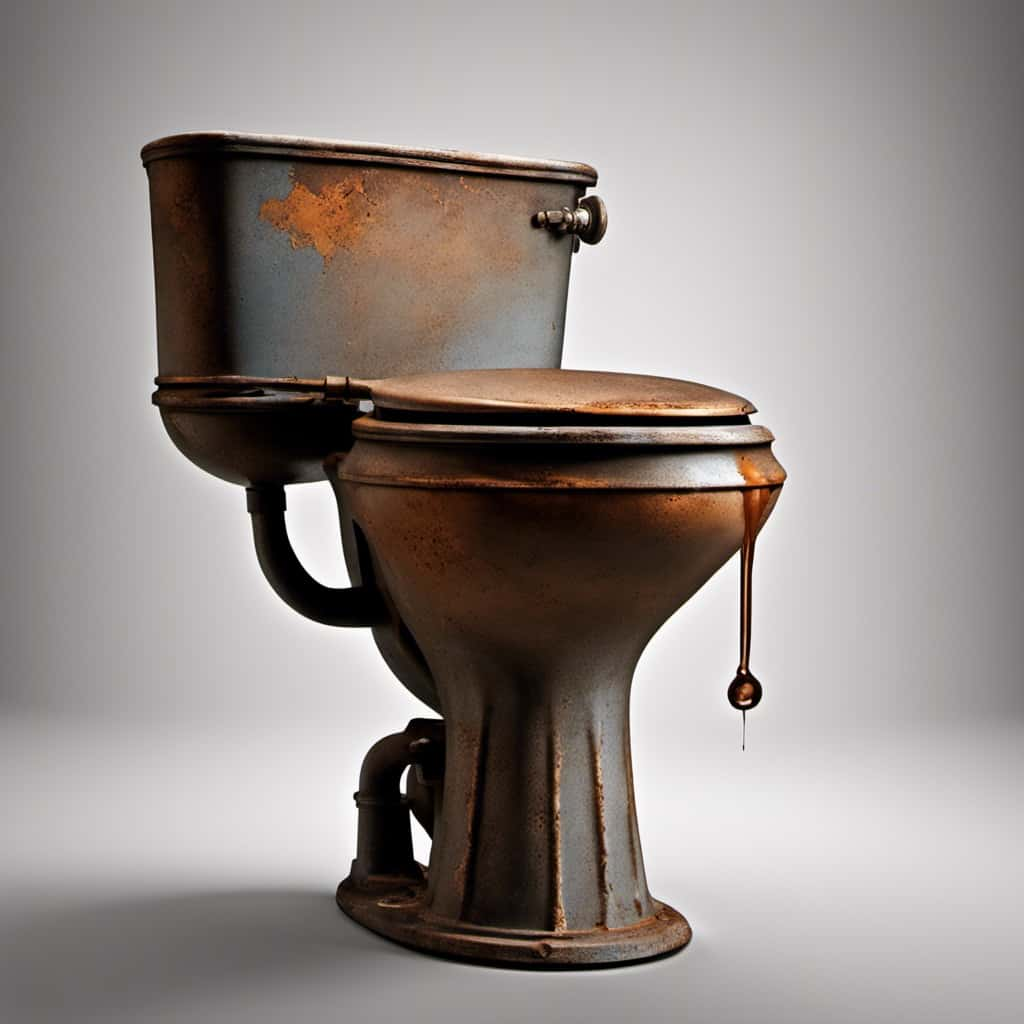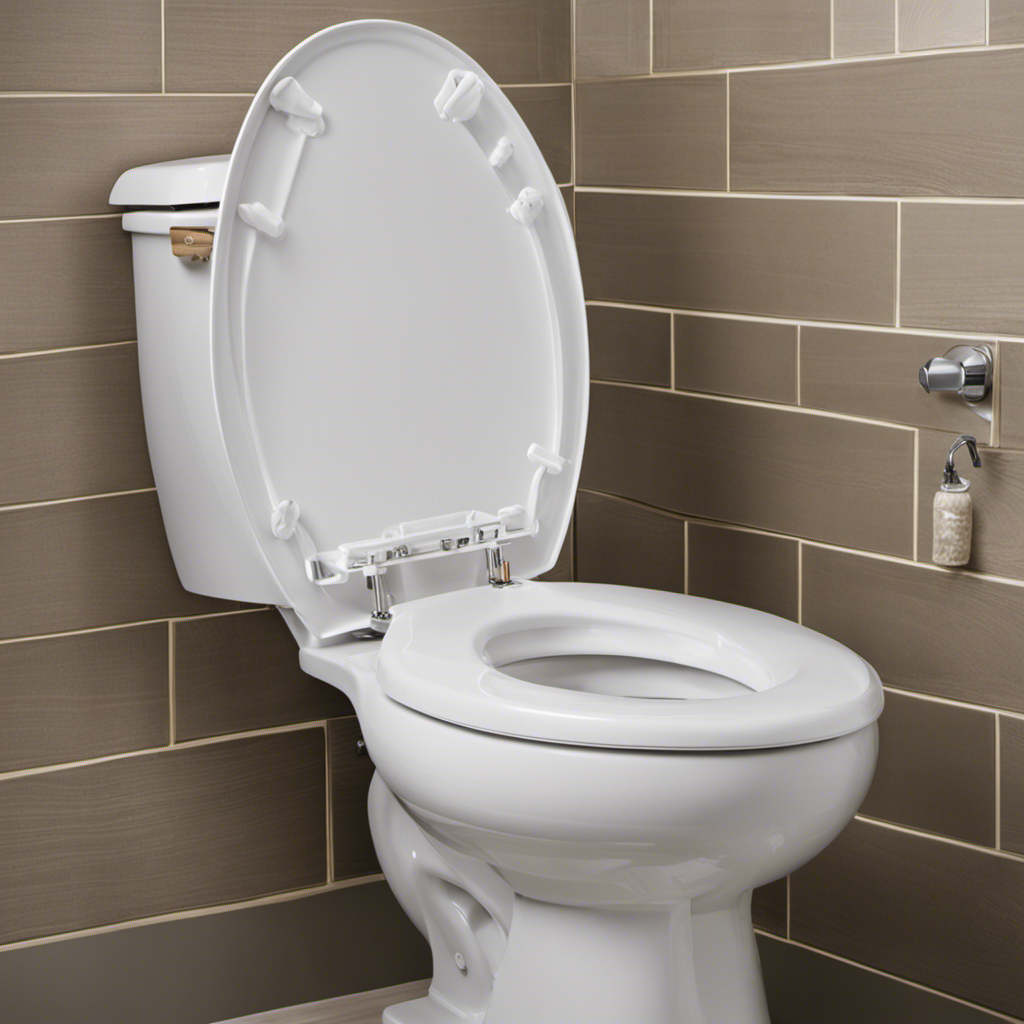As someone who prioritizes cleanliness, I’ve always found myself intrigued by the phenomenon known as the toilet sneeze effect that happens each time we flush. So, what is this toilet sneeze effect, precisely?
In this article, we’ll delve into the science behind it and explore the hidden dangers it presents.
From the health risks associated with toilet sneeze particles to strategies for minimizing its effect, we’ll uncover everything you need to know to promote hygiene and safety in your daily life.
Key Takeaways
- The toilet sneeze effect refers to the airborne transmission of particles from flushing the toilet.
- Closing the toilet lid before flushing can help prevent the particles from becoming airborne.
- Regular cleaning and disinfection of the toilet and surrounding areas can reduce the risk of transmission.
- Understanding and addressing the toilet sneeze effect is crucial in promoting hygiene and safety in daily life.
Understanding the Toilet Sneeze Effect
I understand the toilet sneeze effect as the phenomenon where particles from flushing the toilet can become airborne and potentially spread pathogens. This transmission of particles is known as the toilet sneeze effect. It’s a concerning issue because it can contribute to the spread of diseases and infections in a bathroom setting.
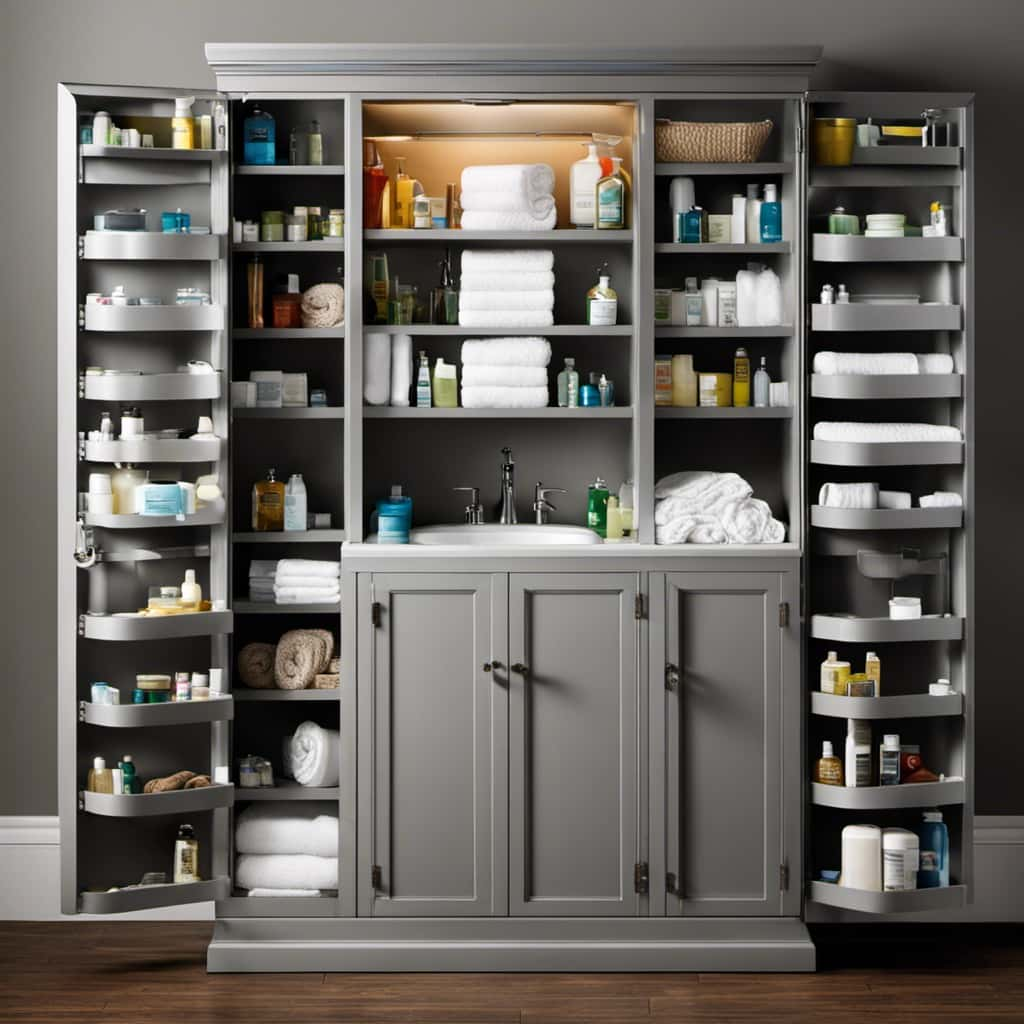
Toilet sneeze prevention is crucial in maintaining a clean and hygienic bathroom environment. One effective way to prevent the toilet sneeze effect is by closing the toilet lid before flushing. This simple action can help contain the particles and prevent them from becoming airborne. Additionally, regular cleaning and disinfection of the toilet and surrounding areas can help reduce the risk of transmission.
Understanding how the toilet sneeze effect occurs can empower individuals to take necessary precautions. When a toilet is flushed, the force of the water can create a plume of droplets that contain bacteria and other microorganisms. These droplets can then travel through the air and potentially contaminate nearby surfaces.
How Does the Toilet Sneeze Happen
How does the toilet sneeze effect occur? Here’s a concise explanation of how this phenomenon happens:
- Flushing: When we flush the toilet, a powerful vortex is created inside the bowl, causing water and particles to be forcefully expelled into the air.
- Aerosolization: The forceful expulsion of water droplets and particles during flushing creates an aerosol, which can contain bacteria, viruses, and other microorganisms present in the toilet bowl.
- Spread and transmission: Once the aerosol is released into the surrounding environment, it can travel several feet and settle on surfaces, potentially contaminating them. If someone comes into contact with these contaminated surfaces and then touches their face or mouth, they can inadvertently introduce the microorganisms into their body.
Toilet sneeze prevention is crucial in reducing the risk of transmission. Here are some preventive measures:
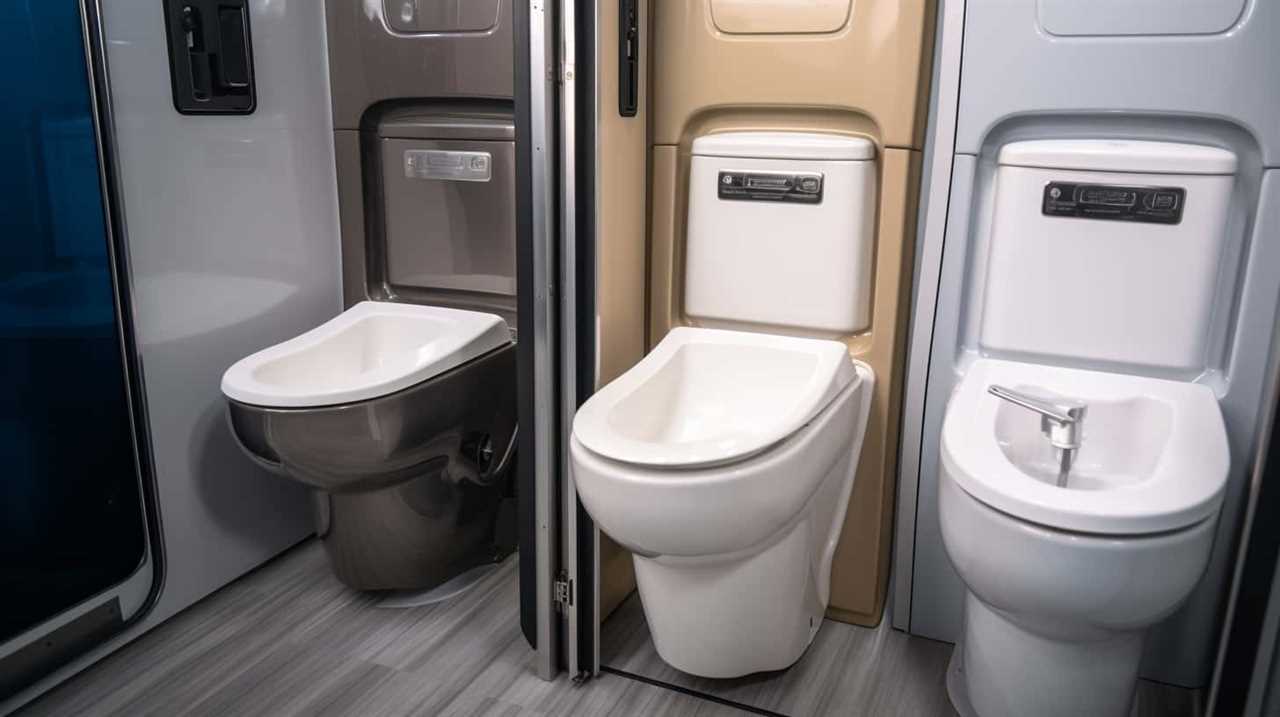
- Close the lid before flushing: This helps to contain the aerosol inside the toilet bowl, preventing it from dispersing into the air.
- Maintain good hygiene practices: Regularly clean and disinfect toilet surfaces, particularly the seat, lid, flush handle, and surrounding areas.
- Wash hands thoroughly: After using the toilet, always remember to wash your hands with soap and water for at least 20 seconds to remove any potential pathogens.
The Science Behind Toilet Aerosolization
After understanding how the toilet sneeze effect occurs, it’s important to delve into the science behind toilet aerosolization. Toilet aerosolization refers to the process where tiny droplets and particles are released into the air when a toilet is flushed. This phenomenon has gained significant attention in recent years, especially in light of the ongoing COVID-19 pandemic.
Toilet aerosolization research has shown that flushing can create a plume of particles that can remain suspended in the air for several minutes. These particles can contain various microorganisms, including bacteria and viruses, which can pose a risk of transmission if inhaled by individuals in close proximity.
Toilet sneeze prevention strategies are crucial in reducing the potential spread of infectious diseases. One effective strategy is to close the toilet lid before flushing, as this can help contain the aerosolized particles within the bowl. Additionally, maintaining good ventilation in bathrooms and regular cleaning and disinfection of toilet surfaces can also minimize the risk of contamination.
Factors Influencing the Toilet Sneeze Effect
When it comes to the toilet sneeze effect, several factors come into play.

The direction and velocity of the airflow, the shape of the toilet bowl, and the distance between seats can all influence the spread of aerosols.
These factors determine how far and how quickly the particles can travel, potentially affecting the transmission of pathogens.
Understanding and addressing these factors is crucial in minimizing the risk of infection in shared restroom facilities.
Airflow Direction and Velocity
One factor that greatly influences the toilet sneeze effect is the direction and velocity of airflow. The airflow patterns and ventilation systems in a restroom can play a significant role in the spread of droplets and particles released during a flush. Here are three key points to consider:
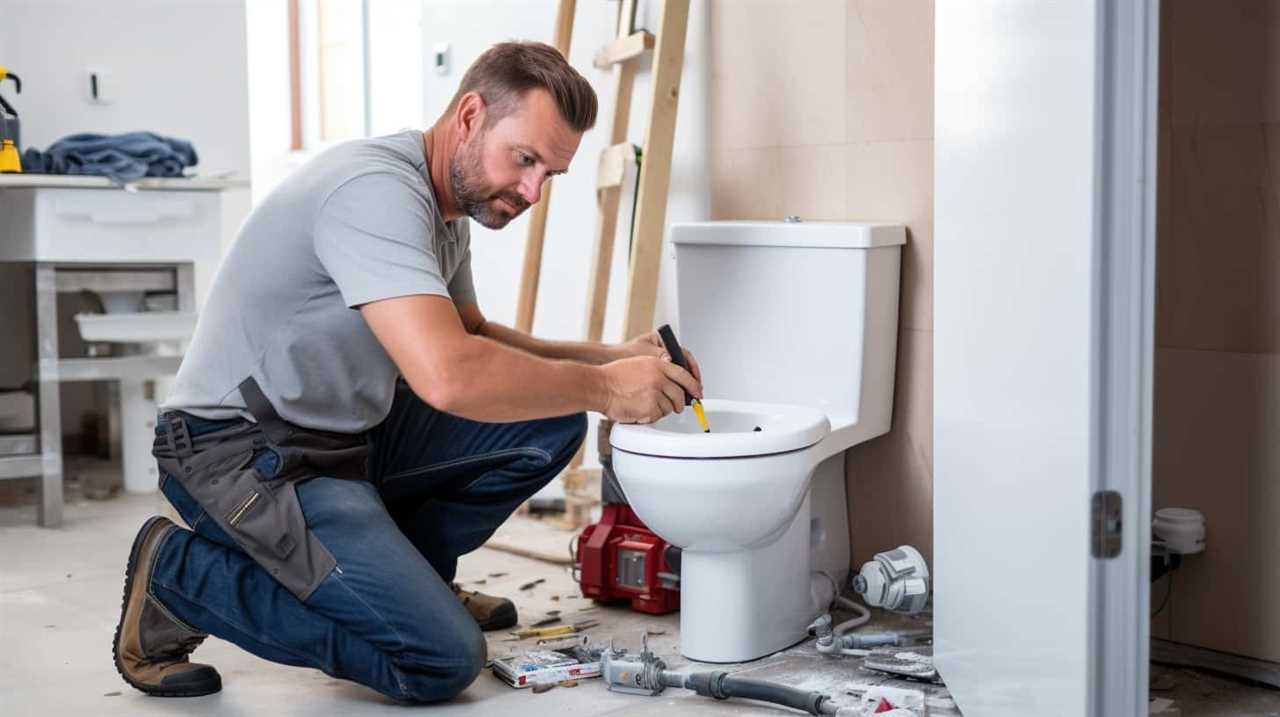
- Airflow direction: The direction of airflow in a restroom can determine where the released droplets and particles will travel. If the airflow is directed towards the toilet, it can help to contain the spread of contaminants within the bowl.
- Airflow velocity: The speed at which the airflow moves can affect how far the droplets and particles travel. Higher velocities can result in a wider dispersion of contaminants, increasing the risk of transmission.
- Ventilation systems: Properly designed and maintained ventilation systems can help control the direction and velocity of airflow in restrooms. These systems should be optimized to remove contaminated air efficiently and prevent the spread of pathogens.
Understanding the impact of airflow direction and velocity is crucial in mitigating the toilet sneeze effect and maintaining a hygienic restroom environment.
Toilet Bowl Shape
Continuing the discussion on factors influencing the toilet sneeze effect, an important aspect to consider is the shape of the toilet bowl. The design of the toilet bowl plays a crucial role in preventing toilet splash and ensuring a hygienic experience. Different toilet bowl shapes can affect the airflow and water movement during flushing, ultimately impacting the potential for a toilet sneeze effect.
Toilet bowl design can vary, but there are three common shapes: round, elongated, and compact elongated. The table below summarizes the characteristics of each shape:
| Shape | Description | Benefits |
|---|---|---|
| Round | Circular bowl shape | Space-saving, suitable for small bathrooms |
| Elongated | Oval-shaped bowl | Comfortable seating position, provides more legroom |
| Compact Elongated | Oval-shaped bowl (smaller) | Combines the benefits of round and elongated shapes |
Choosing the right toilet bowl shape can contribute to effective toilet splash prevention and enhance overall bathroom experience. Consider your bathroom space and personal preferences when selecting the toilet bowl design that best suits your needs.
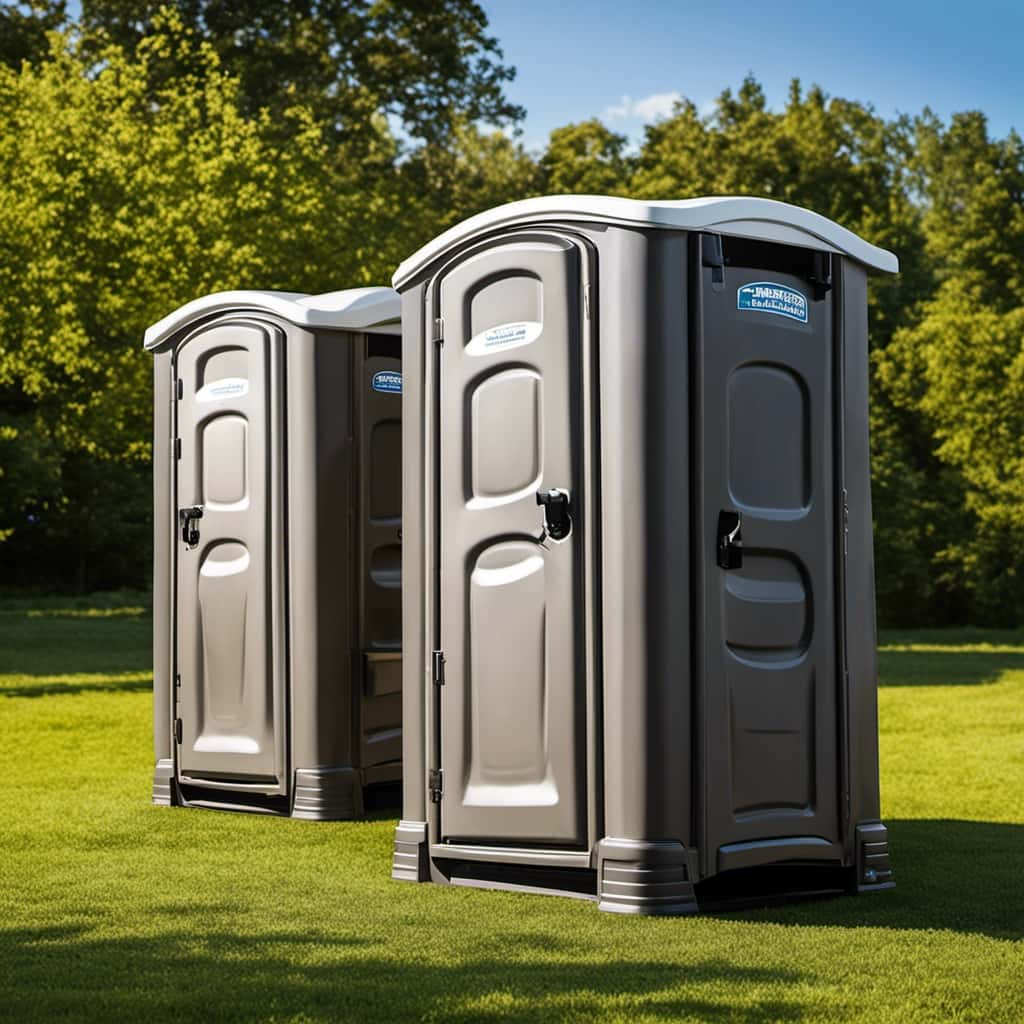
Distance Between Seats
To understand the influence of the distance between seats on the toilet sneeze effect, I’ll examine its impact on airflow and potential for contamination. The distance between seats plays a crucial role in maintaining proper hygiene practices in public restrooms.
Here are three factors that highlight the significance of the distance between seats:
- Airflow: A wider distance between seats allows for better airflow, reducing the concentration of contaminants in the air. This minimizes the chances of inhaling infectious particles.
- Contamination: When seats are too close together, there’s a higher risk of contamination. Bacteria and viruses can easily transfer from one person to another through direct or indirect contact.
- Toilet seat design: The design of the toilet seat also affects the distance between seats. Modern toilet seat designs often consider maintaining an appropriate distance to prevent the spread of germs.
Hidden Dangers of Toilet Sneeze Particles
As I explore the hidden dangers of toilet sneeze particles, it becomes apparent that they pose a significant health risk. Toilet sneeze transmission occurs when an infected person coughs or sneezes near a toilet, releasing tiny droplets into the air. These droplets can contain viruses, bacteria, and other pathogens, which can then settle on surfaces in the bathroom, including the toilet seat, sink, and door handles.
Proper hygiene practices are crucial in minimizing the risk of toilet sneeze transmission. It’s essential to regularly clean and disinfect bathroom surfaces, especially the toilet seat and surrounding areas. Additionally, washing hands thoroughly with soap and water after using the toilet is key in preventing the spread of germs.
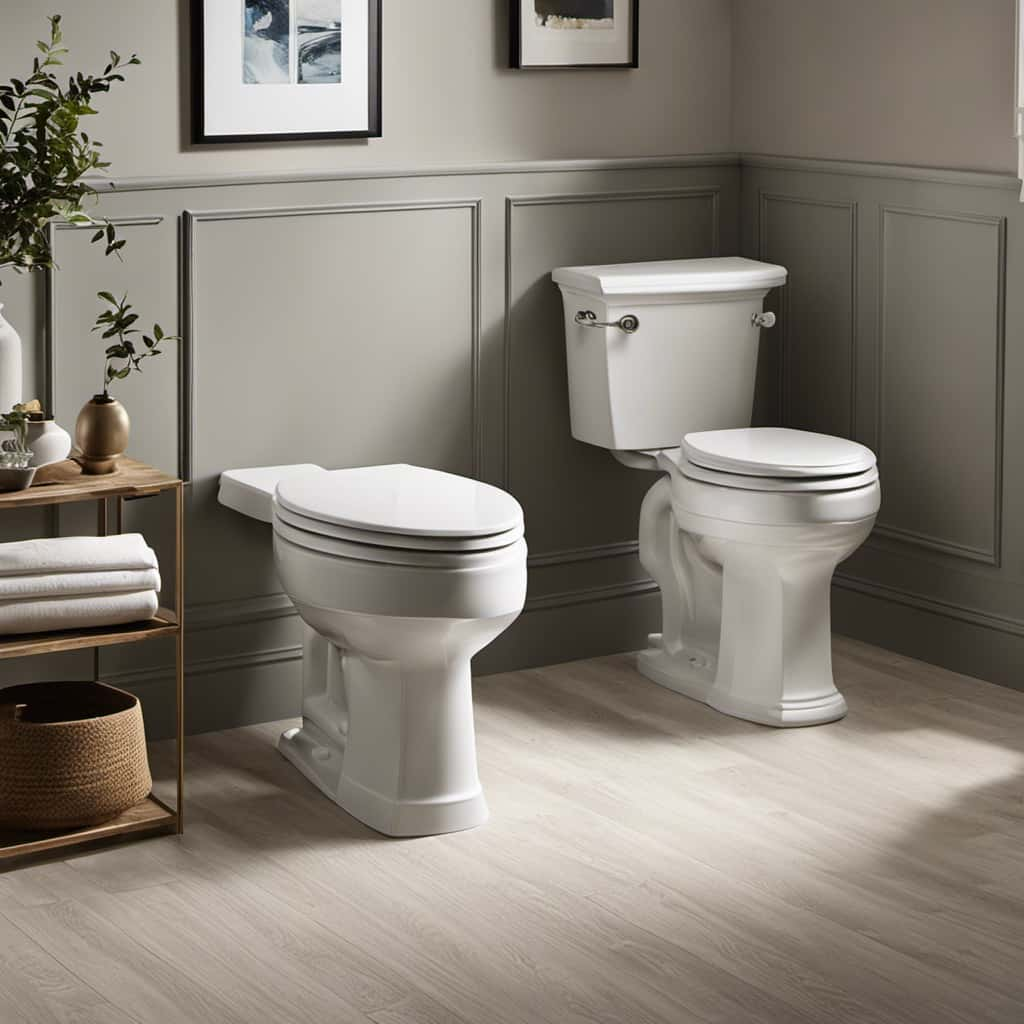
While toilet sneeze particles may not be a topic of everyday conversation, their potential health hazards shouldn’t be underestimated. By understanding the risks and practicing good hygiene habits, we can protect ourselves and others from the hidden dangers that lurk in the bathroom.
Impact on Indoor Air Quality
When it comes to the impact of the toilet sneeze effect on indoor air quality, there are a few key points to consider.
Firstly, flushing can release a variety of contaminants into the air, including bacteria and viruses. This can pose health risks, especially for those with respiratory conditions or weakened immune systems.
To mitigate these risks, it’s important to improve ventilation systems in order to effectively remove and filter out these particles from the air.
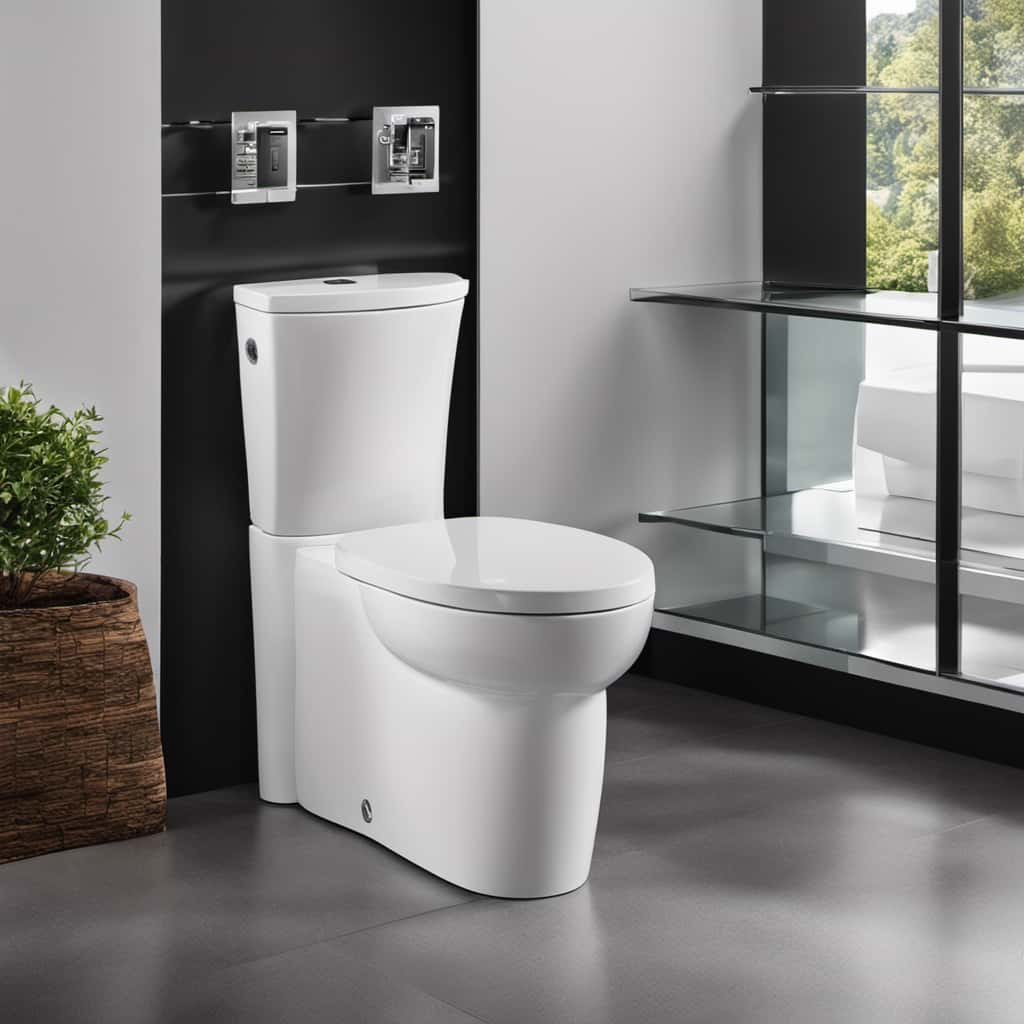
Contaminants From Flushing
Flushing toilets release contaminants that can negatively impact indoor air quality. The contaminants can be spread through the air, posing potential health risks to individuals in the vicinity.
Here are three key ways in which contaminants from flushing can affect indoor air quality:
- Aerosolized droplets: When a toilet is flushed, it creates aerosolized droplets that contain microorganisms, bacteria, and viruses. These droplets can remain suspended in the air for extended periods, increasing the risk of inhalation and subsequent infection.
- Odor-causing compounds: Flushing can release unpleasant odors into the air, caused by compounds such as hydrogen sulfide. These odors may not be harmful, but they can contribute to poor indoor air quality and discomfort.
- Chemical contaminants: Some cleaning products and personal care items that are flushed down the toilet can release harmful chemicals into the air. These chemicals can irritate the respiratory system and contribute to indoor air pollution.
To maintain good indoor air quality, it’s crucial to implement proper toilet sneeze prevention measures and minimize the transmission of contaminants during flushing.
Health Risks Associated
The health risks associated with the toilet sneeze effect can have a significant impact on indoor air quality. When a toilet is flushed, it creates a cloud of microscopic droplets that can contain harmful bacteria, viruses, and other pathogens. These pathogens can become airborne and spread throughout the room, increasing the risk of respiratory illnesses. In fact, studies have shown that the toilet sneeze effect can lead to the transmission of diseases such as norovirus, influenza, and COVID-19. To better understand the potential health risks, take a look at the table below:
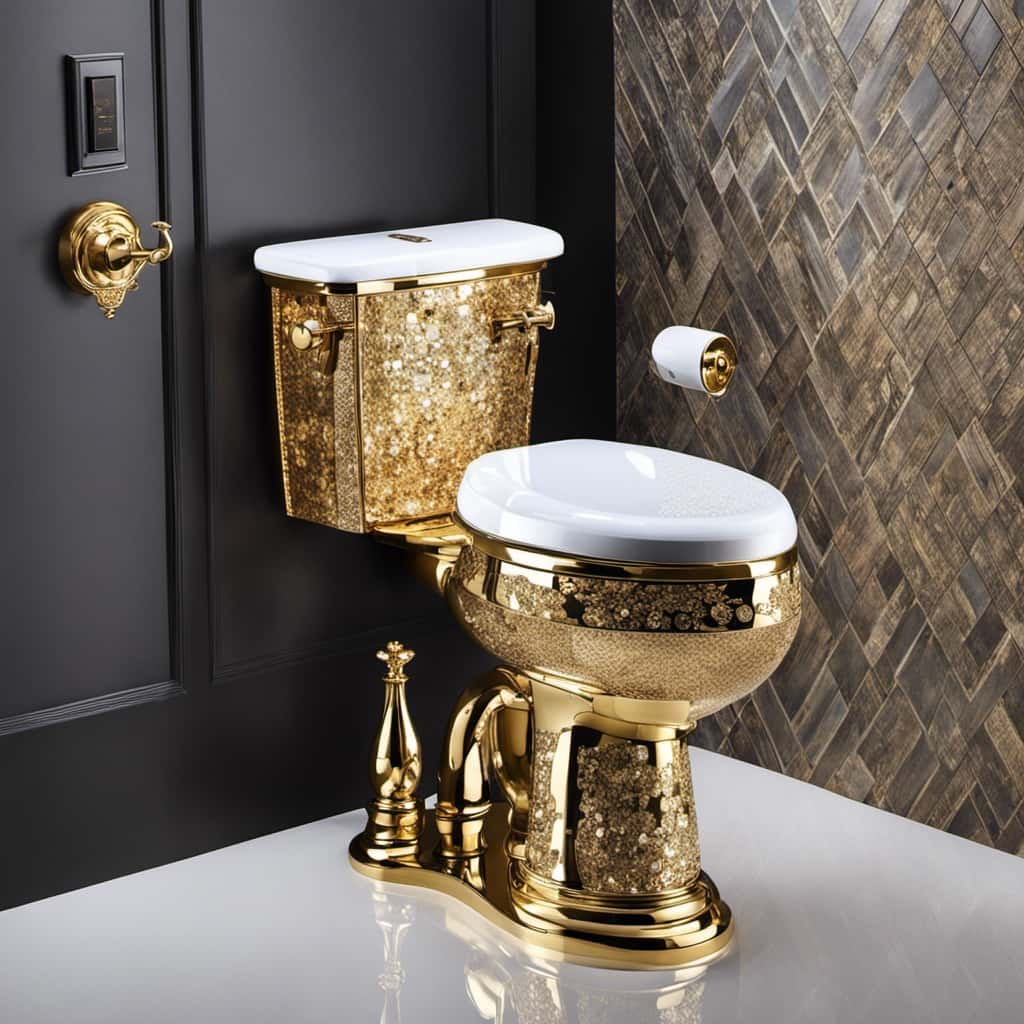
| Health Risks | Examples of Respiratory Illnesses |
|---|---|
| Bacterial | Tuberculosis, Legionnaires’ disease |
| Viral | Influenza, COVID-19, common cold |
| Fungal | Aspergillosis, histoplasmosis |
It is crucial to take measures to minimize the toilet sneeze effect, such as closing the lid before flushing and ensuring proper ventilation in bathrooms. By doing so, we can reduce the risk of airborne transmission and protect our indoor air quality.
Improving Ventilation Systems
To address the impact of the toilet sneeze effect on indoor air quality, I’ll now discuss the importance of improving ventilation systems.
Proper ventilation plays a crucial role in maintaining a healthy indoor environment by improving air circulation and reducing the transmission of airborne particles.
Here are three key reasons why improving ventilation systems is vital:
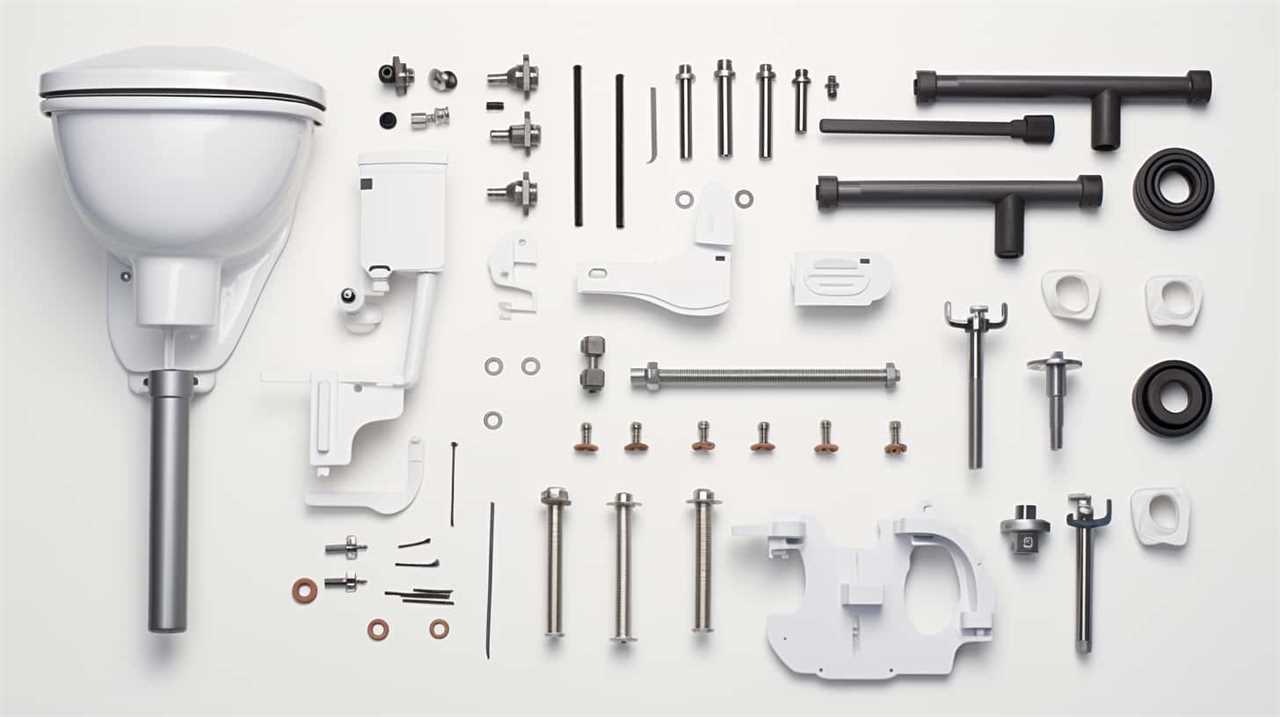
- Enhanced air circulation: By increasing the flow of fresh air, ventilation systems help dilute and remove contaminants, including those released during a toilet sneeze. This reduces the concentration of potentially harmful particles in the air.
- Removal of odors: Ventilation systems effectively eliminate unpleasant odors in bathrooms, creating a more comfortable and pleasant environment.
- Prevention of condensation: Proper ventilation prevents moisture buildup, which can lead to mold and mildew growth. By reducing excess moisture, ventilation systems help maintain a healthier indoor space.
Health Risks Associated With Toilet Sneeze
Experiencing sneezing while using the toilet can pose potential health risks. When we sneeze, droplets containing bacteria and viruses are expelled into the air, creating the perfect opportunity for these pathogens to spread and infect others. This is especially concerning in a bathroom setting where the toilet sneeze effect can occur.
To understand the health risks associated with toilet sneezing, let’s take a look at the potential transmission of germs through a simple table:
| Transmission Route | Examples of Pathogens | Potential Health Risks |
|---|---|---|
| Airborne | Influenza, COVID-19 | Respiratory infections |
| Surface Contact | Norovirus, E. coli | Gastrointestinal illnesses |
| Fecal-Oral | Hepatitis A, Rotavirus | Digestive system infections |
As we can see from the table, toilet sneezes can lead to the transmission of various pathogens through the air, surface contact, and even fecal-oral routes. This increases the risk of respiratory and gastrointestinal infections.
To prevent toilet sneeze transmission and minimize the associated health risks, it is essential to maintain good hygiene practices. This includes covering your mouth and nose when sneezing, regularly cleaning and disinfecting bathroom surfaces, and washing hands thoroughly after using the toilet. These measures can help protect both yourself and others from the potential hazards of a toilet sneeze.
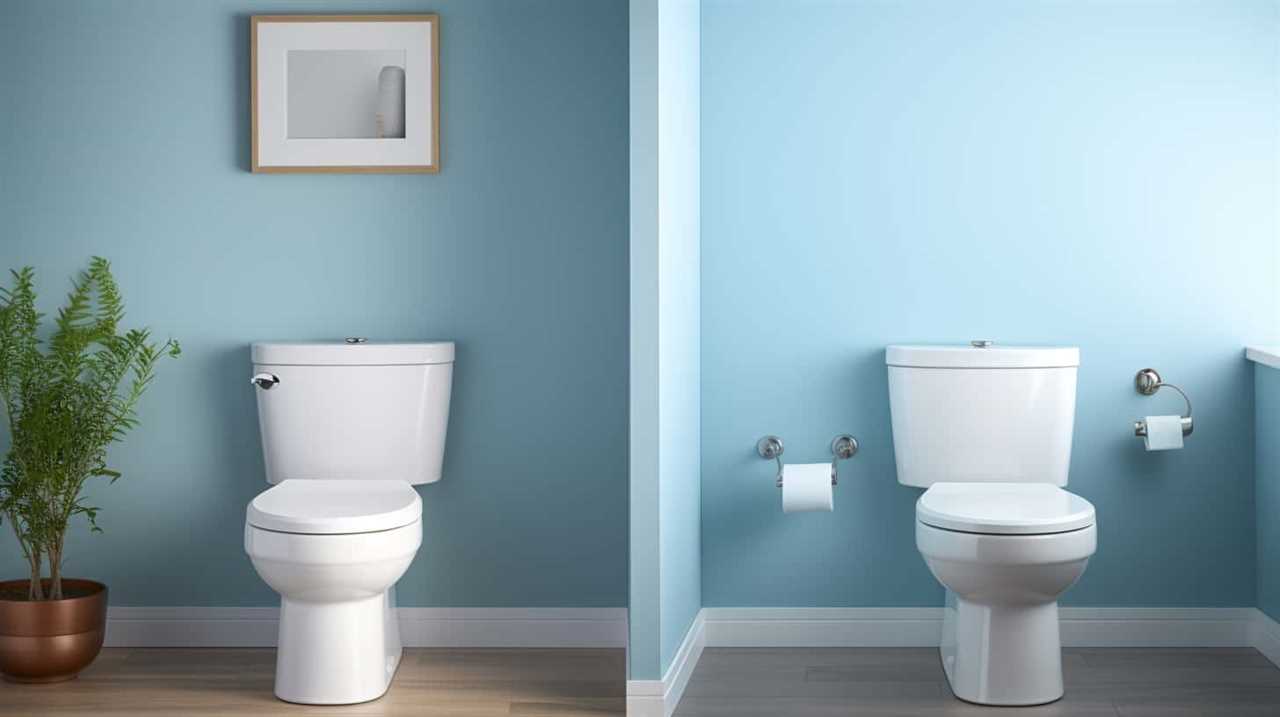
Minimizing the Toilet Sneeze Effect
To minimize the toilet sneeze effect and ensure a cleaner and healthier bathroom environment, here are three effective strategies:
- Keep the toilet clean: Regularly clean the toilet bowl, seat, and surrounding areas to minimize odors and reduce the presence of bacteria. Use a disinfectant cleaner to thoroughly sanitize the toilet and prevent the spread of germs.
- Use air fresheners or odor absorbers: To combat unpleasant odors, consider installing an air freshener or using odor-absorbing products in your bathroom. These can help neutralize and minimize the smell, making your bathroom more pleasant and inviting.
- Practice proper hygiene: Encourage everyone in your household to practice good hygiene habits. Remind them to flush the toilet with the lid closed to prevent the spread of bacteria and germs. Additionally, encourage the use of hand sanitizers or hand-washing after using the toilet to further reduce the risk of contamination.
Cleaning and Disinfecting Strategies
When it comes to cleaning and disinfecting strategies, there are several key points to consider.
First, it’s important to use effective disinfection methods that eliminate germs and bacteria.
Second, time-saving cleaning techniques can help streamline the process and ensure thoroughness.
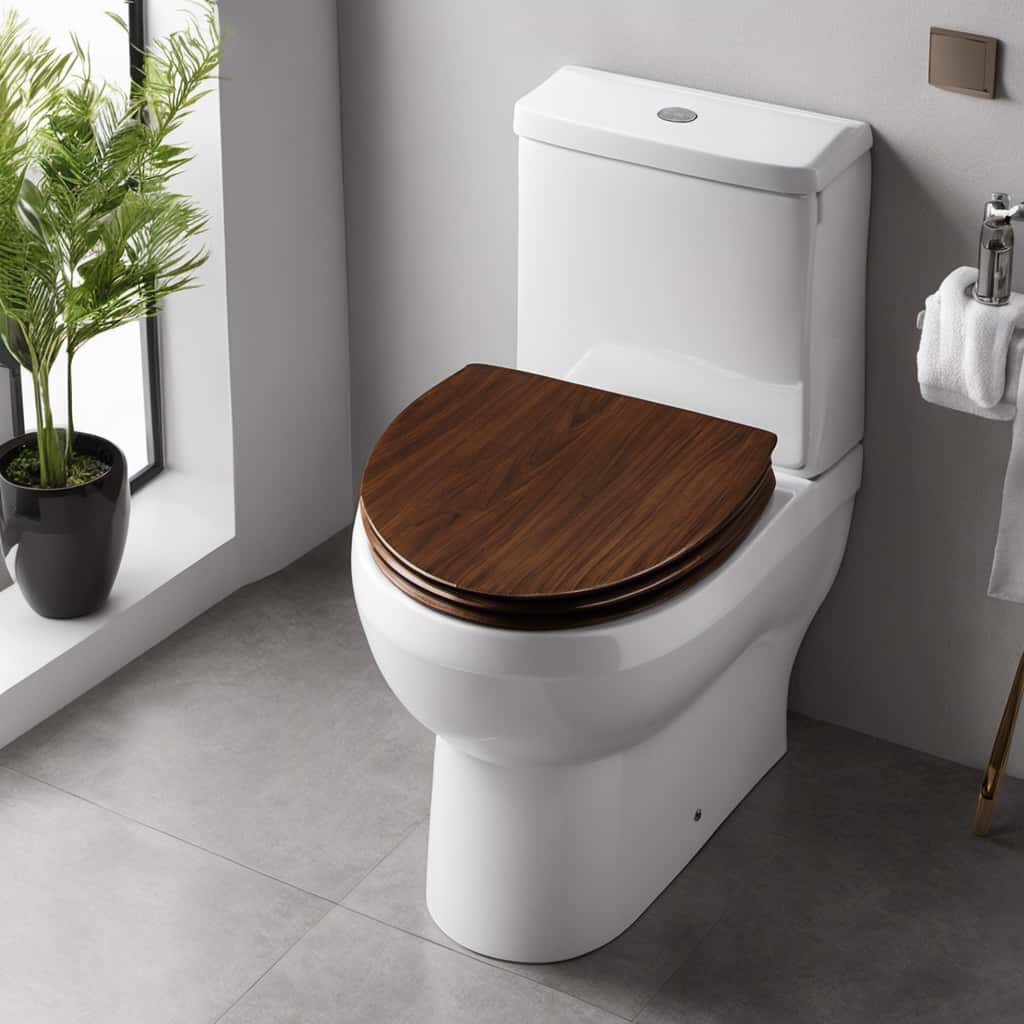
Finally, preventing cross-contamination risks by using separate cleaning tools for different areas can help maintain a hygienic environment.
Effective Disinfection Methods
To effectively disinfect surfaces, I rely on a combination of cleaning and disinfecting strategies. Here are three effective methods that I use:
- Regular cleaning: I start by using a detergent or soap and water to clean the surface. This helps remove dirt, grime, and some germs. It’s important to thoroughly wash and rinse the surface before moving on to disinfection.
- Disinfectant sprays or wipes: Once the surface is clean, I use a disinfectant spray or wipes that are specifically designed to kill germs. These products contain chemicals that are effective against a wide range of bacteria and viruses.
- UV-C light devices: In addition to cleaning and using disinfectant products, I also utilize UV-C light devices. These devices emit ultraviolet light that can kill germs on surfaces. UV-C light is known to be effective against various pathogens, including viruses.
Time-Saving Cleaning Techniques
I rely on a few time-saving cleaning techniques to efficiently clean and disinfect surfaces.
When it comes to saving time, I’ve found that using the right cleaning products is crucial. One of my favorite time-saving cleaning hacks is to use multi-purpose cleaners that can tackle multiple surfaces at once. This eliminates the need for switching between different products and saves valuable time.
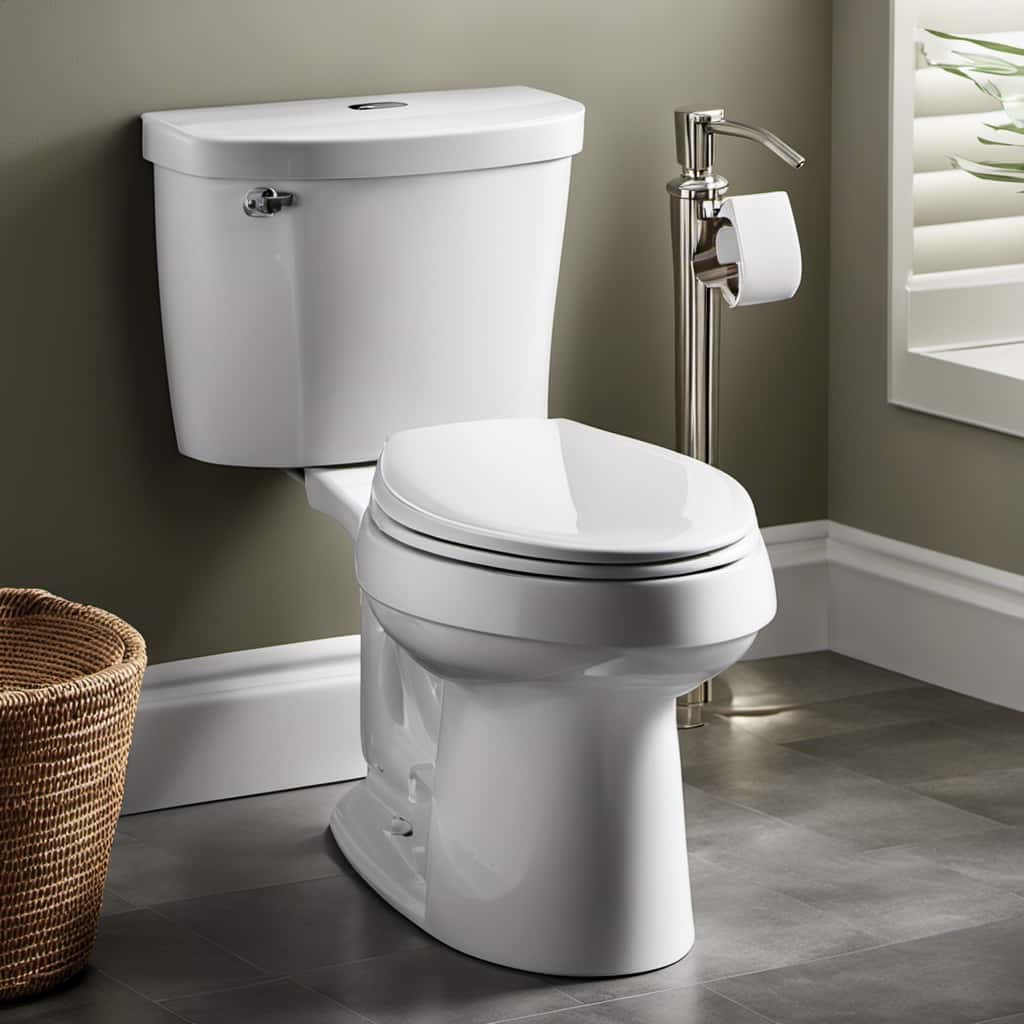
Another time-saving technique I use is to prioritize high-touch areas, such as doorknobs and light switches, and clean them first. This ensures that the most frequently touched surfaces are cleaned and disinfected promptly.
Additionally, I make sure to have all my cleaning supplies and tools organized and easily accessible, allowing me to move quickly from one task to another.
Preventing Cross-Contamination Risks
To prevent cross-contamination risks, I prioritize effective cleaning and disinfecting strategies. Here are three key strategies for improving hygiene practices and reducing transmission risks:
- Regular and thorough cleaning: I ensure that all surfaces, including toilets, sinks, and countertops, are cleaned regularly using appropriate cleaning agents. This helps to remove any potential pathogens and reduces the risk of cross-contamination.
- Proper disinfection: After cleaning, I make sure to disinfect high-touch surfaces such as doorknobs, faucets, and light switches. Using disinfectants that are effective against a wide range of microorganisms helps to kill any remaining pathogens and further reduce the risk of transmission.
- Personal protective equipment (PPE): I always wear gloves and other necessary protective equipment when cleaning and disinfecting. This not only protects me from exposure to harmful chemicals but also helps to prevent the spread of germs from one surface to another.
Conclusion: Promoting Hygiene and Safety
Promoting hygiene and safety requires everyone’s cooperation and adherence to proper toilet etiquette. By following a few simple guidelines, we can help minimize the risk of cross-contamination and create a cleaner and safer environment in public restrooms.
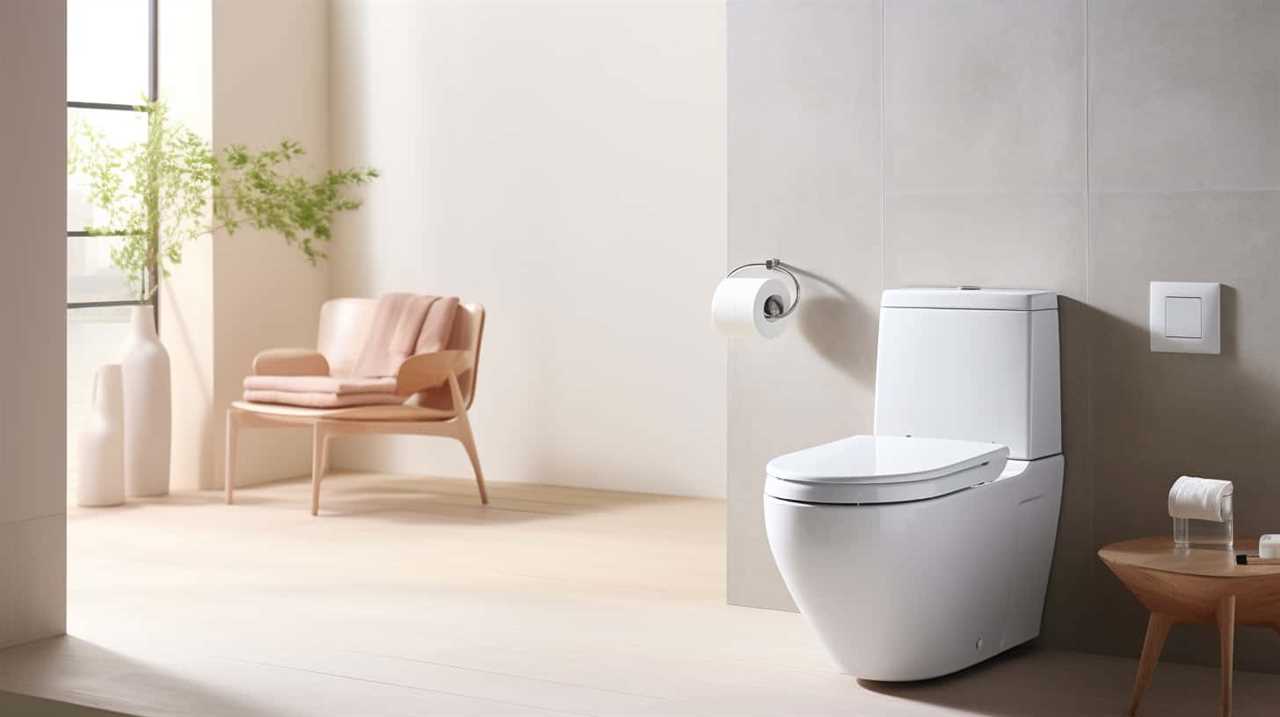
| Hygiene Practices | Safety Measures |
|---|---|
| Regular handwashing | Proper disposal of waste |
| Using hand sanitizers | Avoiding touching surfaces |
| Covering mouth when coughing | Reporting any maintenance issues |
| Properly disposing of tissues | Using non-slip mats on wet floors |
Regular handwashing is one of the most effective ways to prevent the spread of germs. It is important to wash hands thoroughly with soap and water for at least 20 seconds. Additionally, using hand sanitizers can provide an extra layer of protection.
To minimize the risk of contamination, it is crucial to properly dispose of waste materials, such as toilet paper and sanitary products, in designated bins. Avoid touching surfaces as much as possible, especially in high traffic areas. If you need to cough or sneeze, remember to cover your mouth with a tissue or your elbow to prevent the spread of droplets.
Lastly, maintaining the safety of public restrooms is essential. Any maintenance issues, such as broken fixtures or leaks, should be promptly reported to the appropriate authorities. Using non-slip mats on wet floors can help prevent slips and falls.
Frequently Asked Questions
How Often Should I Clean and Disinfect My Toilet to Minimize the Toilet Sneeze Effect?
To minimize the toilet sneeze effect, I find it beneficial to clean and disinfect my toilet at least once a week. Regular cleaning helps to eliminate any bacteria or viruses that may be present.
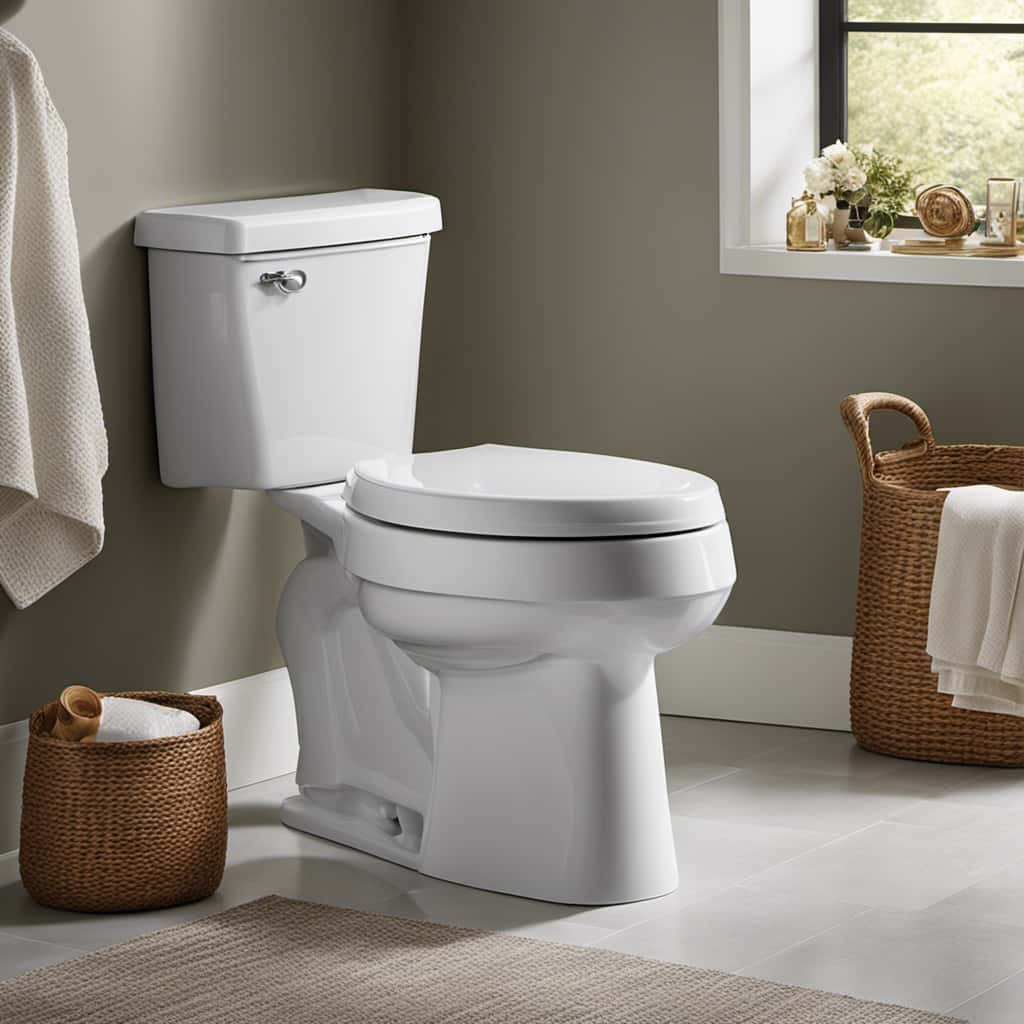
I also recommend using natural cleaning products, as they’re effective and safer for both you and the environment.
Additionally, maintaining a clean and odor-free toilet can be achieved by regularly scrubbing the bowl, cleaning the seat and handle, and ensuring proper ventilation in the bathroom.
Can the Toilet Sneeze Particles Travel to Other Rooms in My House?
Yes, the toilet sneeze particles can travel to other rooms in your house.
When you flush the toilet, microscopic droplets containing bacteria and viruses can be released into the air. These droplets can then circulate throughout your home, potentially affecting the indoor air quality.
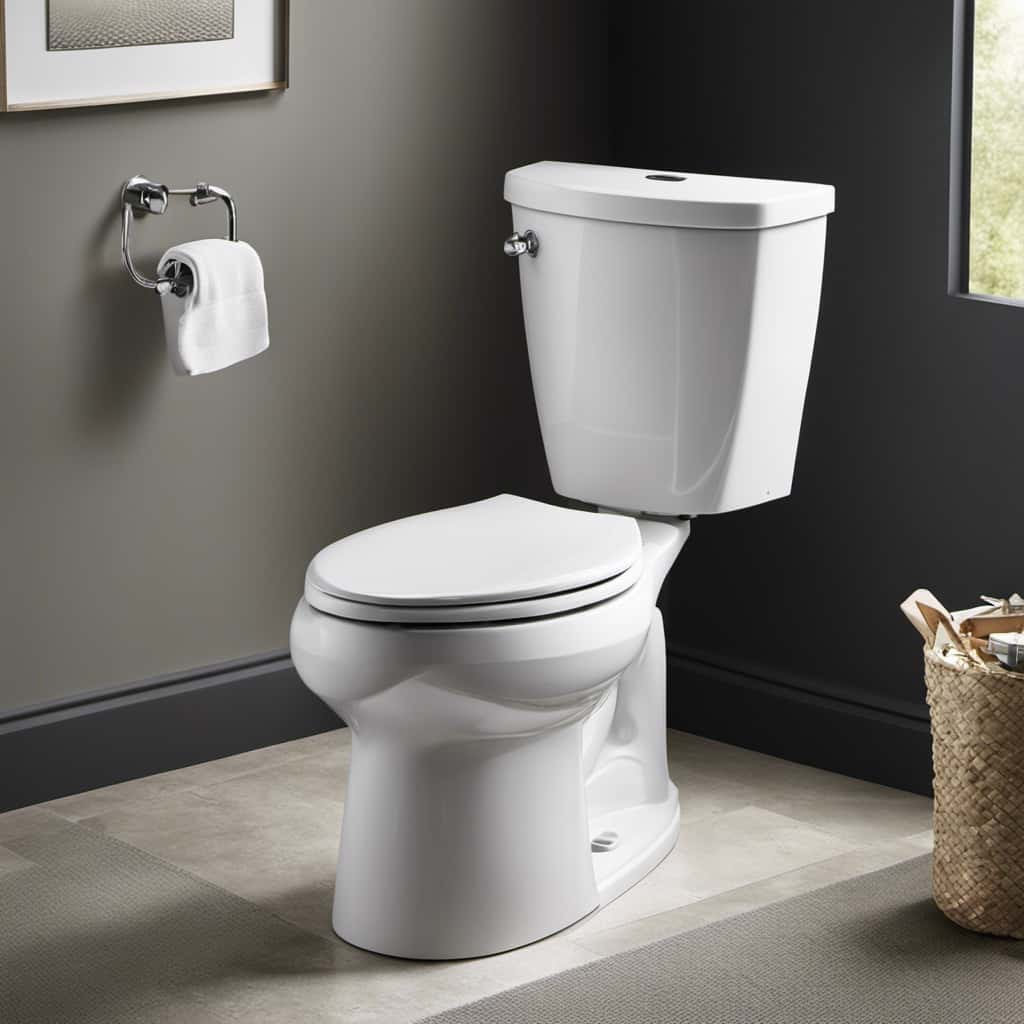
Breathing in these particles can have an impact on respiratory health, especially for individuals with weakened immune systems or respiratory conditions.
Therefore, it’s important to clean and disinfect your toilet regularly to minimize the spread of these particles.
Are There Any Specific Cleaning Products That Are More Effective in Reducing the Toilet Sneeze Effect?
In terms of reducing the toilet sneeze effect, there are indeed specific cleaning products that are more effective.
It’s important to look for disinfectants that are specifically designed to kill germs and bacteria commonly found in bathrooms. Look for products that contain ingredients like bleach or hydrogen peroxide, as these have been proven to be effective in eliminating pathogens.
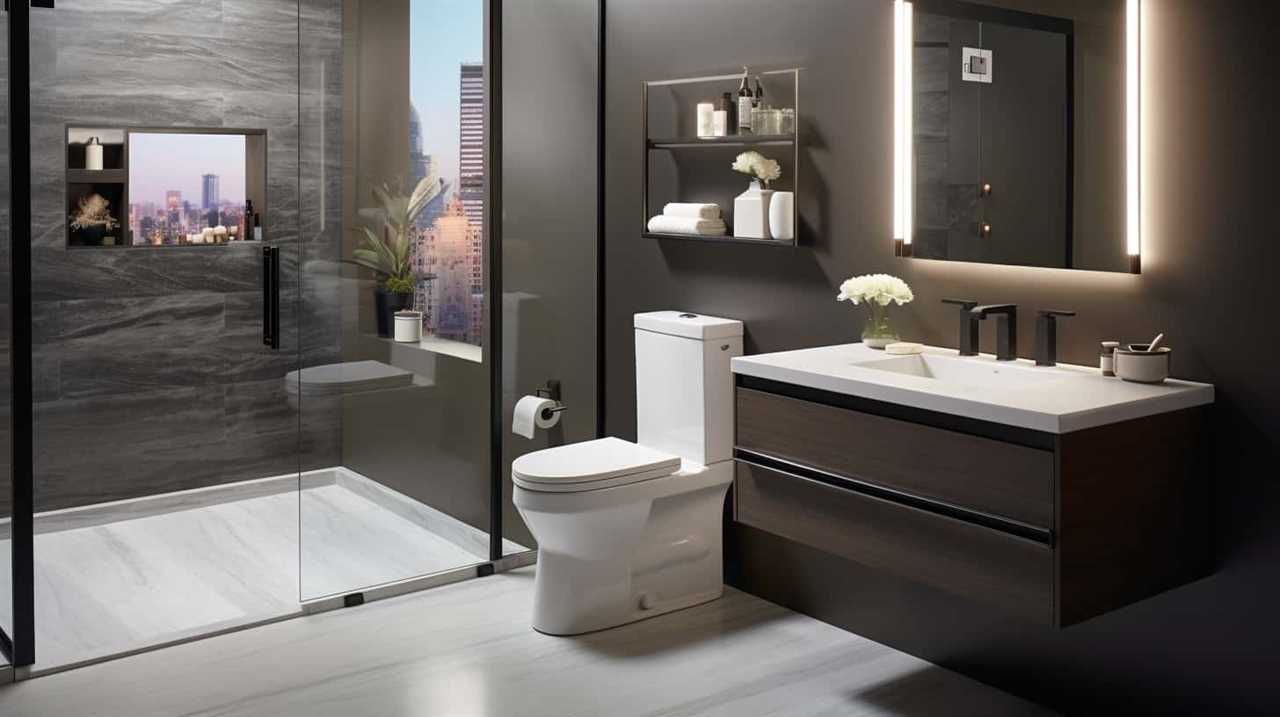
Additionally, using a toilet bowl cleaner that targets stains and odors can help maintain a cleaner and more hygienic bathroom environment.
Can Using a Bidet or a Different Type of Toilet Fixture Help Reduce the Toilet Sneeze Effect?
Using a bidet or a different type of toilet fixture can indeed help reduce the toilet sneeze effect.
Bidets are designed for hygienic purposes, ensuring a thorough cleaning after using the toilet.
Other fixtures, such as self-cleaning toilets or toilets with built-in bidet functions, also contribute to improved personal hygiene.
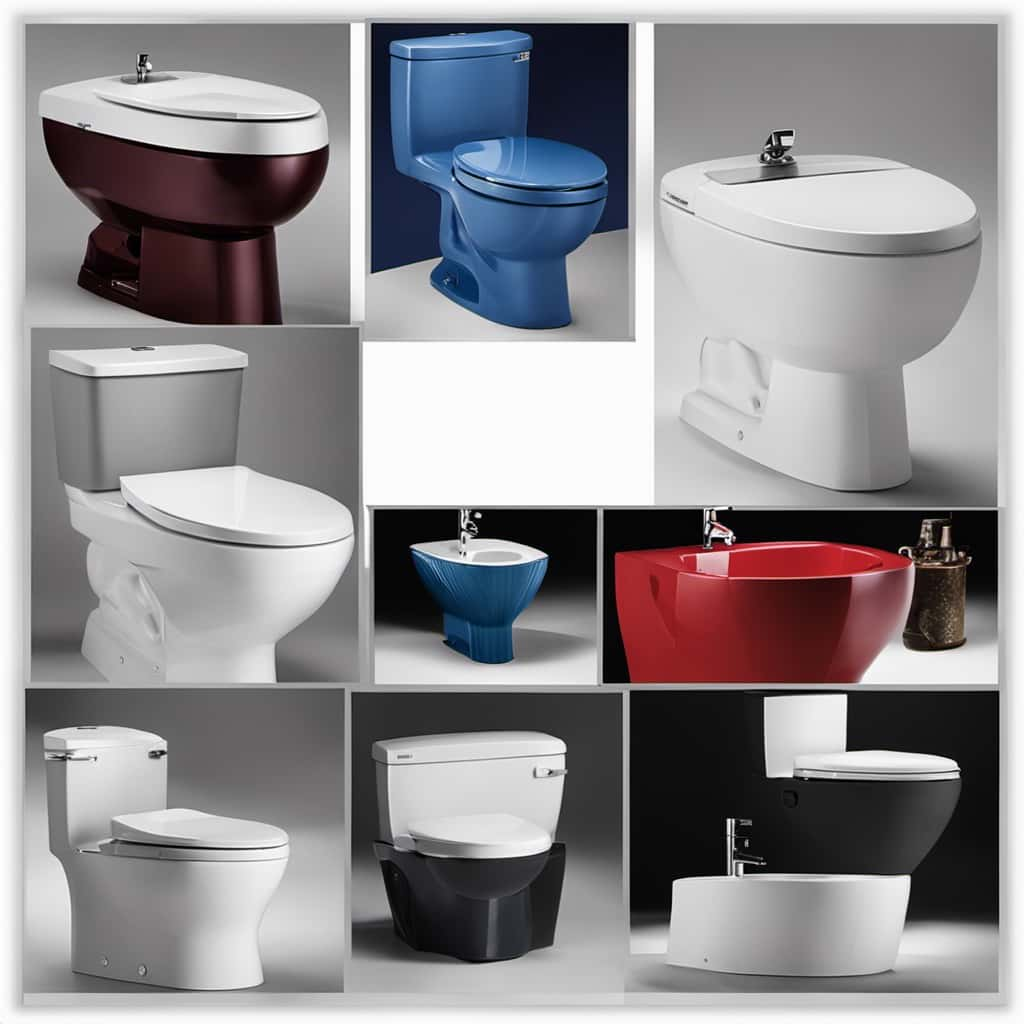
Is It Safe to Use Public Restrooms Considering the Toilet Sneeze Effect?
Is it safe to use public restrooms considering the toilet sneeze effect?
Well, let’s talk about public restroom hygiene tips first.
It’s important to wash your hands thoroughly and use hand sanitizer after using the restroom.
Additionally, consider alternatives to using public restrooms, like planning your outings around restroom availability or carrying a portable toilet.

These measures can help reduce the risk of exposure to germs and ensure your safety while using public restrooms.
Conclusion
In conclusion, the toilet sneeze effect is a hidden danger we must be aware of. The science behind aerosolization shows how easily particles can spread, putting our health at risk.
It’s crucial to minimize this effect by regularly cleaning and disinfecting our toilets. By promoting hygiene and safety, we can protect ourselves and those around us from the potential dangers of the toilet sneeze.
Stay tuned for more information on how to stay safe and healthy in our everyday lives.
